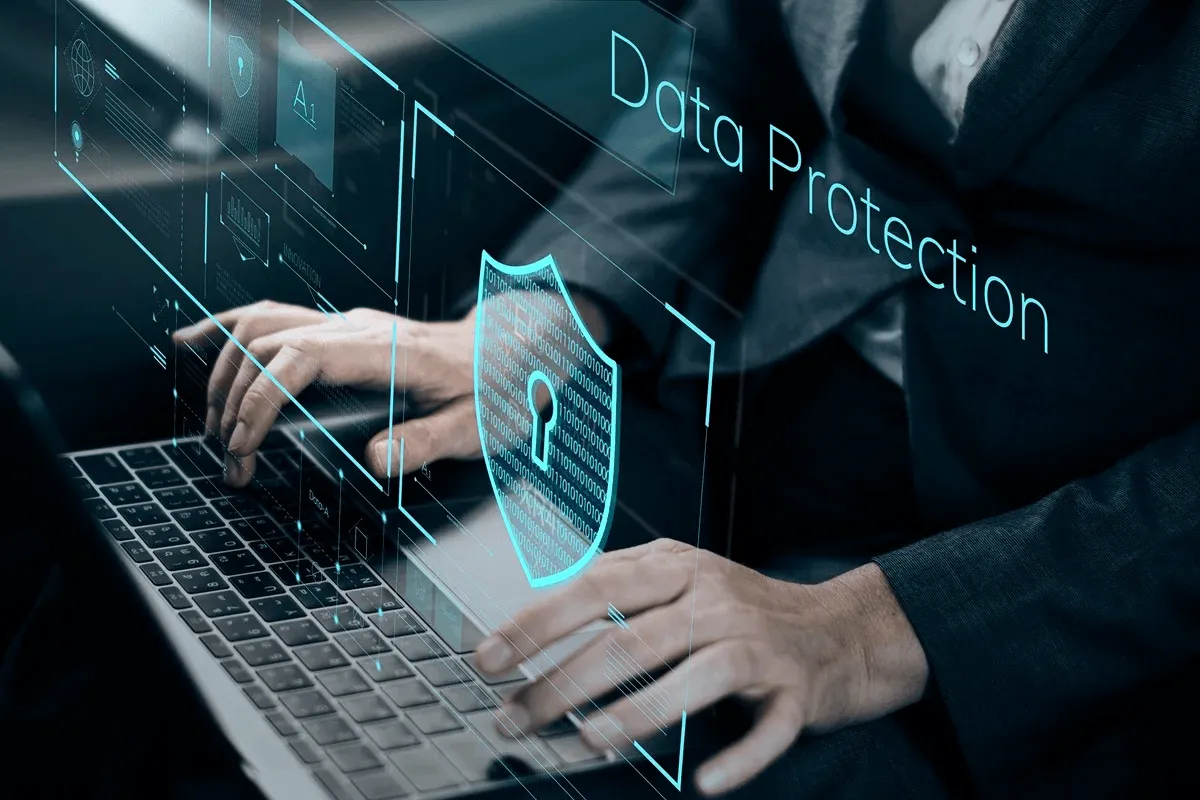Data is the backbone of nearly every business operation. From customer records to proprietary information, safeguarding data has become a non-negotiable priority—especially for businesses operating or outsourcing in data-sensitive environments, such as the Philippines. With the enactment of the Data Privacy Act of 2012 and increasing global scrutiny on data handling, understanding and implementing data protection best practices is critical.
Other major global regulations, such as the General Data Protection Regulation (GDPR) and the California Consumer Privacy Act (CCPA), as well as health insurance portability requirements, have also significantly influenced data protection standards by emphasizing data privacy, consumer protection, and regulatory compliance.
This guide provides a professional and accessible roadmap for business owners, SMEs, and decision-makers seeking to explore outsourcing opportunities in the Philippines. We cover essential legal frameworks, practical protocols, and expert recommendations, emphasizing the importance of establishing comprehensive data protection policies and adhering to data security best practices to ensure compliance and safeguard sensitive information.

What Is Data Protection and Why Does It Matter?
Data protection refers to policies, procedures, and technologies designed to safeguard personal, financial, and business-critical data from unauthorized access, corruption, theft, or loss. It ensures data privacy, accuracy, and availability—principles that directly impact trust, legal compliance, and operational resilience, with data availability being a key principle. Protecting business-critical data, including customer information and financial records, is crucial under data protection regulations.
Failing to secure data can lead to costly breaches, reputational damage, and regulatory penalties. Regulatory compliance with data protection laws and privacy regulations, such as GDPR and CCPA, is crucial to avoid legal risks and ensure adherence to industry standards. According to IBM’s 2024 Cost of a Data Breach Report, the global average cost of a data breach is $4.45 million.
For businesses operating in or outsourcing to the Philippines, compliance with the Data Privacy Act (DPA) of 2012 is not optional. It sets stringent requirements on how personal data is collected, processed, stored, and shared.
Key Components of the Philippine Data Privacy Act of 2012
The Data Privacy Act (Republic Act No. 10173) regulates the processing of all personal information in the Philippines. It applies to both local and foreign companies that handle the personal data of Filipino citizens. The law emphasizes the importance of data classification to identify and manage sensitive data, as well as transparent data collection practices to ensure compliance and build trust.
The Law Defines Three Types of Personal Information:
- Personal Information (PI): Data that can identify an individual (e.g., name, address).
- Sensitive Personal Information (SPI): Includes race, religion, health, education, and more. Other sensitive data can include customer health information, payment details, medical histories, and confidential information, all of which require robust protection to prevent unauthorized access.
- Privileged Information: Legally protected communication like attorney-client or doctor-patient correspondence.
Core Obligations for Businesses:
- Appoint a Data Protection Officer (DPO)
- Conduct Privacy Impact Assessments (PIAs)
- Implement Security Measures (technical, organizational, physical)
- Develop a Privacy Management Program
- Report Data Breaches within 72 hours
- Establish clear incident response protocols to effectively manage security incidents.
- Implement data deletion procedures to comply with data lifecycle requirements.
- Conduct regular data discovery and maintain data access governance to ensure proper management of sensitive information.
- Ensure Data Subject Rights (access, correction, erasure, objection)
Data Protection Best Practices for Businesses
Whether you’re managing your data internally or outsourcing operations to service providers in the Philippines, following these best practices can help ensure compliance and reduce risk. Adopting security best practices and implementing a comprehensive data security plan are essential for protecting data and safeguarding sensitive information in today’s digital landscape.
1. Appoint a Qualified Data Protection Officer (DPO)
Designate a dedicated DPO who understands legal, technical, and organizational aspects of data privacy, including responsibility for data access governance. This individual should oversee compliance, conduct audits, and serve as the primary point of contact for regulatory bodies, such as the National Privacy Commission (NPC).
2. Conduct Regular Privacy Impact Assessments
Before launching any new project or partnership involving data, perform a Privacy Impact Assessment (PIA). This helps identify risks and embed protective measures into your processes early on, using data discovery tools to locate sensitive information during assessments.
3. Implement Multi-layered Security Controls
Adopt a defense-in-depth strategy:
- Technical: Firewalls, encryption, secure authentication, access controls, and access control mechanisms are essential. Implement strict access controls, including role-based access control (RBAC) and multi-factor authentication (MFA), to ensure only authorized users can access sensitive data and to meet regulatory standards. Implementing multi-factor authentication is a key security measure that adds an extra layer of protection against unauthorized access.
- Organizational: Role-based access, regular training, and appropriate access controls are necessary to restrict access to sensitive data and ensure compliance with security policies.
- Physical: Physical security measures, such as restricted access to servers, secured hardware, locked workstations, and surveillance, are critical to preventing unauthorized physical access.
Additionally, secure remote access with strong authentication and use intrusion detection systems to monitor for potential threats and unauthorized activities.
4. Educate Your Workforce
Human error remains one of the leading causes of data breaches, including accidental data exposure and security vulnerabilities. Train employees regularly on:
- Recognizing phishing attacks
- Safe data handling
- Password hygiene
- Recognizing security threats and vulnerabilities
5. Manage Third-party Risks
When outsourcing, ensure your vendors uphold the same data protection standards. Ask for:
- Security certifications (e.g., ISO 27001)
- Data processing agreements (DPAs)
- Audit rights and regular reporting
- Review vendor data handling practices and data collection practices to ensure alignment with your standards.
6. Establish a Data Breach Response Plan
Time is critical in a breach. Create a documented response plan that includes establishing clear incident response protocols for managing security incidents, such as:
- Incident detection and containment
- Communication protocols
- Regulatory notification procedures
7. Maintain Data Inventory and Mapping
Know where your data resides by cataloging all enterprise data and understanding your organization’s data landscape. Create a detailed inventory of:
- Data types
- Storage locations
- Access permissions
- Data flows across systems
- Data usage patterns
- Data access controls
8. Minimize Data Collection
Only collect and retain data that is necessary, and implement data deletion policies to reduce data exposure. This minimizes exposure and reduces the risk footprint.
9. Use Encryption and Anonymization
Protect sensitive data using:
- Encryption: Encrypt data both at rest and in transit to protect data stored on devices and during transmission. Encryption transforms readable information into encrypted data, making it unreadable to unauthorized users. The use of cryptographic keys is essential for securely generating, storing, and managing encryption and decryption processes. Without the decryption key, encrypted data is useless to anyone attempting unauthorized access. This is especially important for protecting customer financial information and other sensitive data. Encryption also helps secure cloud data, and specialized tools can be used to discover, classify, and manage risks associated with cloud data.
- Anonymization/Pseudonymization: To limit identification
10. Monitor and Audit Continuously
Regularly audit your systems and policies to identify gaps, including monitoring data usage to detect potential security threats and data breaches. Consider using automated tools for:
- Intrusion detection, such as intrusion detection systems (IDSs), which help identify threats and alert you to suspicious activity
- Policy enforcement
- Log analysis
Related Article:
Crafting a Robust Data Management Strategy: A Guide to Maximizing Your Business’s Data Potential
Learn how a data management strategy can improve business efficiency. Discover key benefits and steps for building an effective strategy with expert tips.
Data Backup and Recovery: Building Resilience Against Data Loss
A strong data security strategy isn’t complete without reliable data backup and recovery measures. Backing up critical data is essential for protecting sensitive data from unexpected threats such as data breaches, accidental deletion, hardware failure, or data corruption. By regularly creating secure data backups, businesses can safeguard their most valuable information and ensure that business operations continue smoothly—even in the face of disaster.
To build true resilience against data loss, businesses should implement a layered approach to data backup and recovery. This includes scheduling frequent backups of all critical data, storing copies in secure off-site or cloud environments, and ensuring that only authorized users have access to backup files. It’s equally important to routinely test recovery procedures so that data can be restored quickly and accurately when needed.
Effective data backup and recovery not only protects data but also supports business continuity by minimizing downtime and reducing the risk of operational disruption. By prioritizing these best practices, organizations can strengthen their defenses against data loss and potential data breaches, ensuring that sensitive information remains secure and accessible at all times.
Outsourcing to the Philippines: What to Watch For
The Philippines is a global hub for Business Process Outsourcing (BPO), attracting clients due to its English-proficient workforce, cultural compatibility, and cost efficiency. However, outsourcing introduces new dimensions of risk: Businesses and organizations must ensure compliance with data protection regulations and privacy regulations, such as GDPR, CCPA, and HIPAA, to safeguard sensitive information and avoid legal complications.
Due Diligence for Philippine BPO Partners
Before engaging a service provider:
- Vet their data privacy practices
- Verify their compliance with the DPA
- Request their breach history and incident response plans
- Assess how the provider controls and restricts access to sensitive data, including the use of strict access controls
Key Clauses in Outsourcing Contracts
Incorporate the following into your contracts:
- Data ownership and return policies
- Confidentiality clauses
- Audit rights
- Penalties for non-compliance
- Require a documented data security plan and clear data handling practices from your provider
Local Regulatory Support
The National Privacy Commission (NPC) actively guides companies in matters related to data protection. Utilize their resources and seek guidance when structuring complex outsourcing agreements.
Leveraging Technology for Better Data Protection
Here are tools and platforms businesses can use to strengthen data protection:
| Tool Category | Example Tools | Use Case |
|---|---|---|
| DLP (Data Loss Prevention) | Symantec, Forcepoint | Prevent data leaks; secure cloud data with specialized tools |
| Encryption | VeraCrypt, BitLocker | Secure data at rest; use transport layer security (TLS) to encrypt data in transit |
| IAM (Identity & Access Management) | Okta, Azure AD | Manage user access; leverage data discovery tools to identify sensitive data |
| SIEM (Security Info & Event Mgmt) | Splunk, IBM QRadar | Monitor and analyze threats; integrate data discovery for sensitive data identification |
| Backup & Recovery | Veeam, Acronis | Disaster recovery |
Real-world Example: A Cautionary Tale
In 2021, a Philippine-based BPO suffered a breach that exposed the personal data of over 250,000 individuals, highlighting the risks of data theft and data exposure resulting from inadequate security. Investigations revealed:
- Lack of encryption on sensitive files
- Inadequate employee training
- No formal breach response plan
The company faced reputational damage, legal scrutiny, and loss of contracts. This incident underscores the importance of proactive, layered protection.
Secure Your Data, Secure Your Future
Thinking of outsourcing to the Philippines? Data security doesn’t have to be a roadblock—it can be your competitive edge. Partner with compliant providers, build internal awareness, and stay ahead of threats. Your reputation, customers, and bottom line depend on it.
Frequently Asked Questions
What is the main law governing data protection in the Philippines?
The Data Privacy Act of 2012 (RA 10173) governs data protection, enforced by the National Privacy Commission (NPC).
Is appointing a Data Protection Officer mandatory in the Philippines?
Yes, under the Data Privacy Act, organizations processing personal data must appoint a DPO.
What should be included in a data breach response plan?
Key elements: detection, containment, notification (within 72 hours), post-breach analysis, and inclusion of data classification and data deletion procedures in the response plan.
How can SMEs manage data protection cost-effectively?
Start with risk assessments and a basic data security plan, including basic encryption, staff training, and vetting third-party vendors.
What are the penalties for violating data privacy laws in the Philippines?
Penalties range from fines of PHP 500,000 to PHP 5 million and imprisonment, depending on severity.







